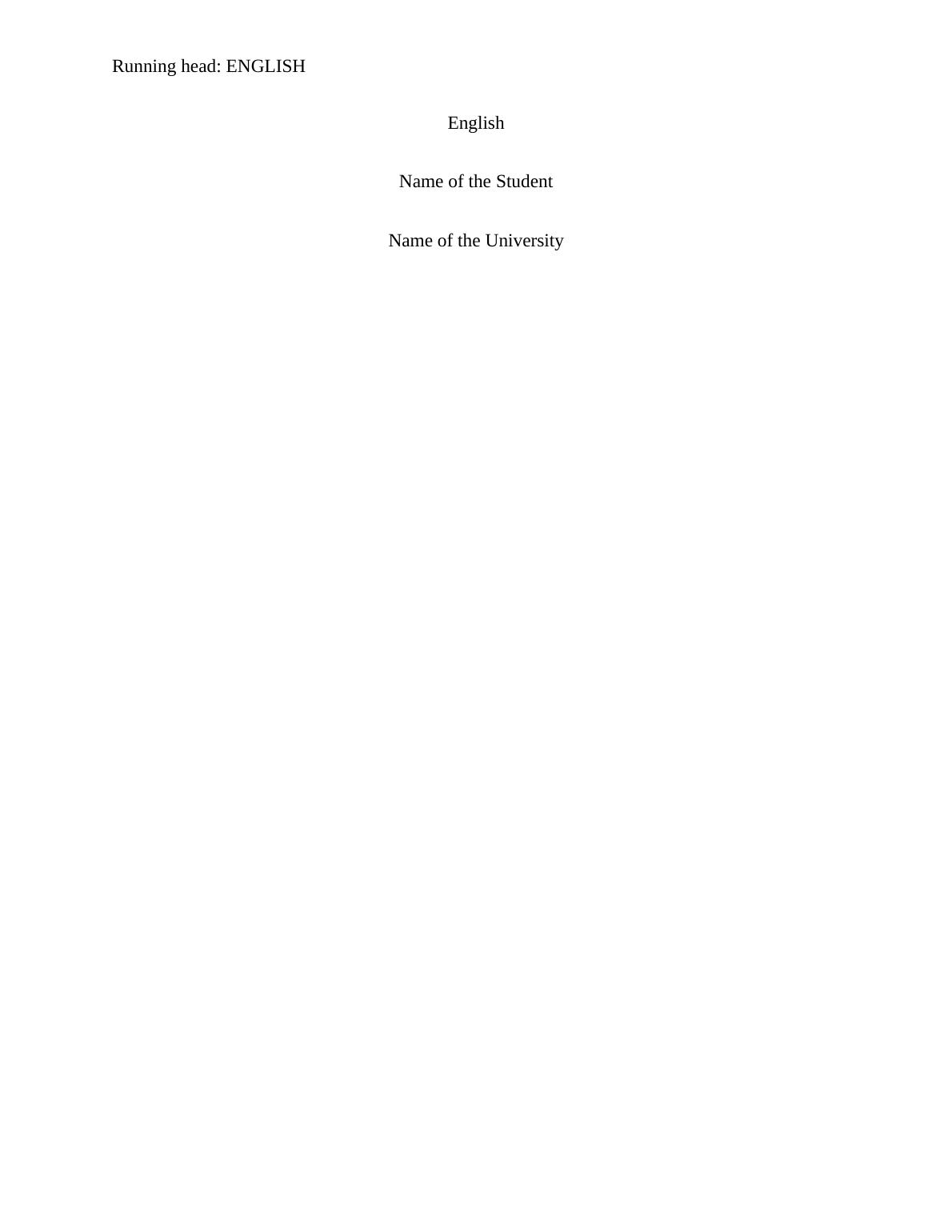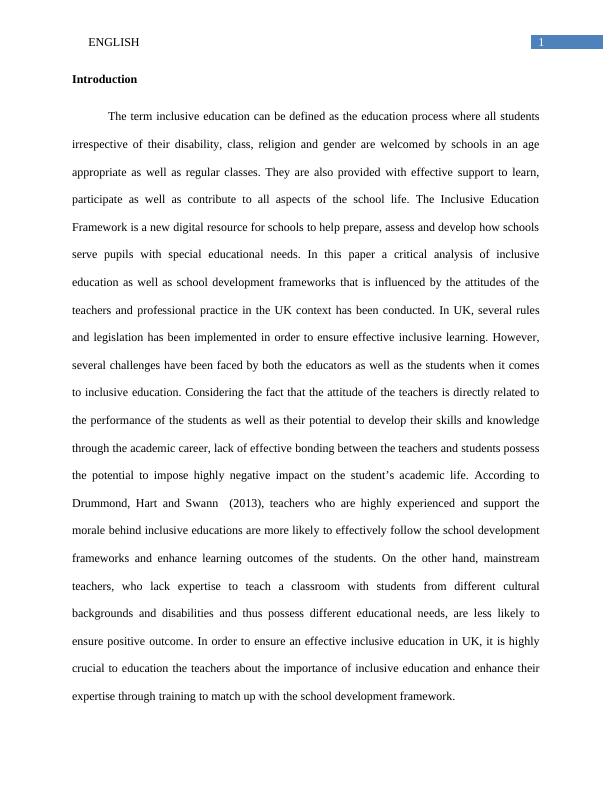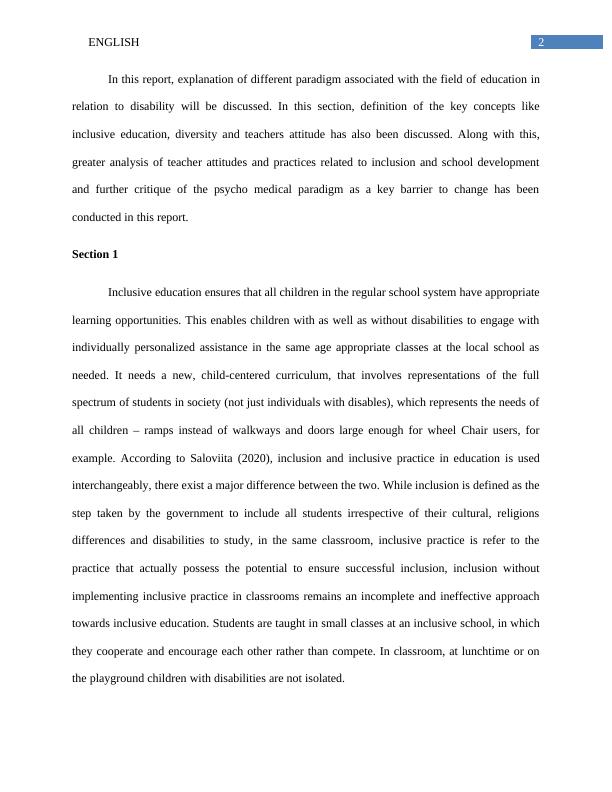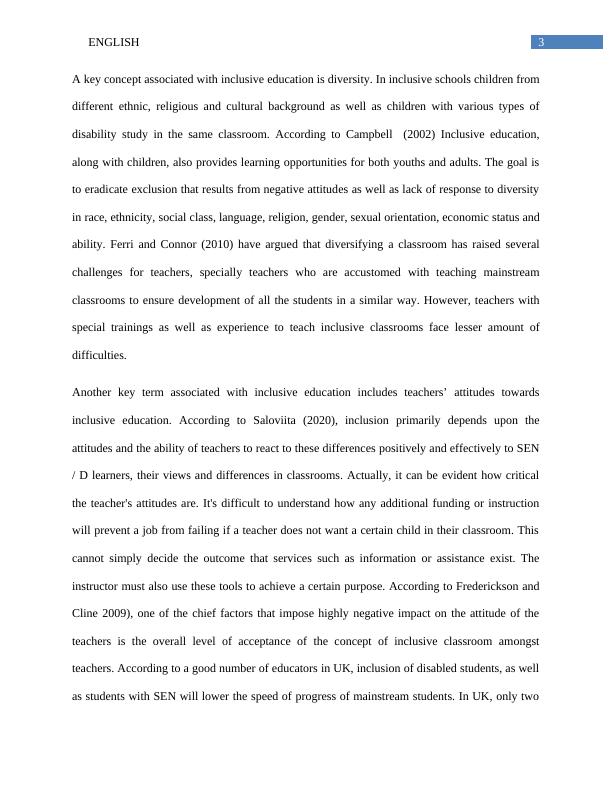English Critical Analysis 2022
Write a 4,000-word essay critically analyzing inclusive education frameworks, teacher attitudes, and professional practice in the UK context, with a focus on how educational settings respond to diversity and inclusion.
19 Pages5150 Words38 Views
Added on 2022-09-12
English Critical Analysis 2022
Write a 4,000-word essay critically analyzing inclusive education frameworks, teacher attitudes, and professional practice in the UK context, with a focus on how educational settings respond to diversity and inclusion.
Added on 2022-09-12
ShareRelated Documents
End of preview
Want to access all the pages? Upload your documents or become a member.
Attitudes of Bhutanese Teachers towards Inclusive Education
|17
|4028
|258
Teaching and Education
|4
|724
|57
(PDF) The role of the teacher in interactive teaching
|13
|2894
|290
Inclusive Education and Teacher Education for Inclusion
|9
|3157
|64
SP602 Pro Electronic Balance Assignment.
|6
|3105
|20
Literature Review : Effectiveness of Inclusive Education to Dyslexic Learners
|16
|5073
|413




